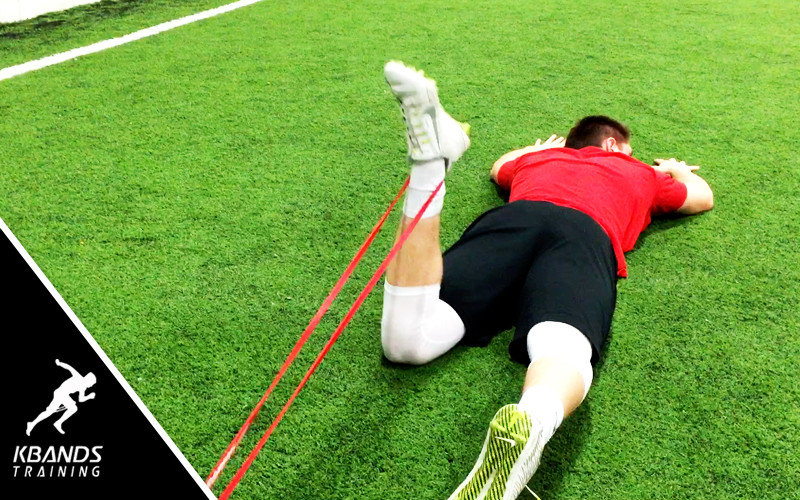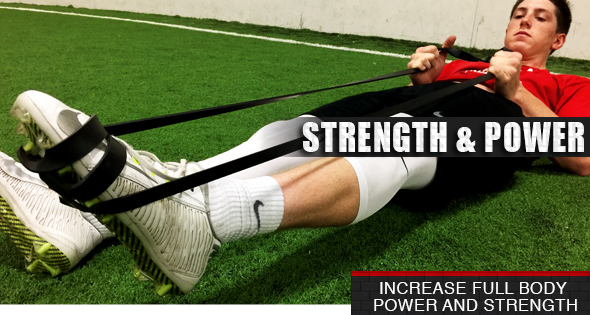Understanding The Biomechanics Of Hamstrings And Ankles
For an athlete, the hamstrings are among the most powerful muscles due to their involvement in a broad range of activities such as sprinting, lunging and jumping. Hamstrings transfer the power between the knees and the hips, propelling the forward momentum and affecting the overall performance of an athlete. Similarly, the role of strong ankles can’t be overstated in the sports arena. Building up the ankle strength can have an immediate and extremely powerful impact on an athlete’s sports and training performance. These exercises are basically strength training and preventive workouts that will injury-proof your ankles while ensuring improved speed, power and agility on the field. Therefore, with the help of manual resisted hamstring curls and ankle rehab exercises mentioned here, the athletes will improve their speed, flexibility, mobility and reduce their susceptibility to sport related injuries.
Manual Resisted Hamstring Curls
The purpose of these manual resisted hamstring curls is to increase your range of motion, flexibility and speed with the help of resistance bands. Lying leg curls are the most beneficial workout for strengthening the hamstring muscles as the angle created on the hamstring during the lying leg curl allows for controlled tension to be applied throughout the set of hamstring curls. Several variations of hamstring curls can be performed with the help of Kbands Ballistic Bands. These drills are more explosive than the traditional manual resistance hamstring curls involving slower reps. The trick here is using the right amount of resistance by using the appropriate resistance band that the athlete can easily flex and move fast.
Getting Started With Kbands Ballistic Bands:
The athletes can choose the right strength level from our range of Kbands Ballistic Bands: red black, green, blue, purple, black and orange. The bands provide two benefits over the traditional hamstring curls: first, the resistance makes the movement a bit more challenging as you bring the band closer to your body. The second is that it allows you more freedom of movement, increasing your range of motion and flexibility. Here, we will be using the black band and start off the workout by moving quickly and at a fast pace for 30 seconds, first with the left leg and then the right leg before taking a quick break. Short reps with high intensity sets will be the focus of this drill; finish 4-6 sets before moving onto the next workout. We suggest doing these drills after finishing the speed workout for increased flexibility and strength.
Manual Resisted Hamstring Power Curls
In this drill, the partners are required to kneel behind the athletes who will be lying flat on their stomach. The partner will grab the opposite end of the Ballistic Band and place it at a level at which the athlete cannot stretch and it works more like a belt or a rope. The athletes will try to curl their legs up to their butt and the partners will resist the movement, offering just enough resistance to maintain the hips flat on the floor. Finish about 8-10 reps on each leg, starting with the left one before taking a break. An extended break of a minute and a half or two is necessary after this high intensity exercise. After a short period of rest, start back with the left leg, and after finishing 3 sets, bring both the feet together for the next drill. Since both the feet are held close together, this drill calls for a little less resistance. Now that we have two feet working, we will try to notch up the pace a bit, making sure to resist on the way out. Eccentric resistance is the key here; it helps the hamstrings develop the ability to resist the high forces experienced during high-speed running as well as in the prevention of hamstring injuries. After completing 8-10 reps for 3 sets with the legs held together, we will wrap up the Ballistic Band workout and move on to the ankle rehab exercises.
Ankle Rehab Exercises
Here, we will explain the ankle exercises for rehabilitation of specific injuries as well as for mobility, strengthening and proprioception (balance). The objective of the ankle rehab exercises is to restore full pain free range of motion in the joint, strengthen the peripheral muscles, and prepare the athlete for normal training and competition. The ankle rehab exercises mentioned here constitute mostly mobility and strengthening exercises and use your ankle's range of motion against the resistance provided by Ballistic Bands.
For the ankle rehab exercises, the athletes will lie down on their back and wrap their Ballistic Bands around the ball of the foot to run through the resisted exercises for strengthening those ligaments. The athletes may choose the red, black or the purple bands depending on their level of expertise with the Ballistic Bands. First, the athletes will engage their ankle in an up-down movement, providing their own resistance by pulling the band. Point the toes down and resist the upward movement of the foot. Since eccentric resistance is at play here, we will try to stabilize all the way through the resistance and all the way back down. Concentrate on keeping a steady motion during the ankle movement for proper ankle mobility. It also aids building those stability muscles that will go a long way in decreasing your risk of ankle injury.
After finishing 10-15 reps up and down on each leg, move on to the sideways movement of the ankle. Follow it up with a circular movement of the ankle in the clockwise and anti-clockwise direction either for 10-12 reps (or 30 seconds) before switching to the other foot. After finishing up with both the ankles, we will get back to the left ankle and try to write the letters of the alphabet in the air. Repeat with the right foot and wrap up the workout.
Kbands Ballistic Bands are core to these resistance drills and will help the athletes boost the stability, mobility and flexibility of their hamstring muscles as well as the ankle. With practice, the athletes can add more resistance to their workout by switching to an advanced level of Ballistic Band. It will turn up the intensity of the workout and increase the tension placed on the hamstring muscles. If you wish to get started with your resistance training and find out more about the various levels of resistance of the Ballistic Bands, visit our Shop Section and get yourself the right kind of Ballistic Bands that’s perfectly suited for your training needs.


